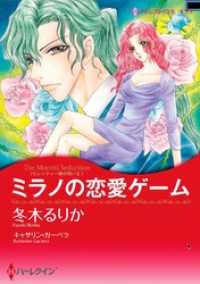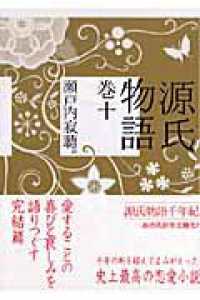- ホーム
- > 洋書
- > 英文書
- > Biography / Autobiography
Full Description
This title was first published in 2002. Adrian Stokes (1902-1972) wrote some of the most engaging and provocative art criticism of the twentieth century. He was a prolific author publishing books on the Renaissance, among them The Quattro Cento and Stones of Rimini (recently reissued), on ballet, and on the work of contemporary Modernist artists. Stokes entered psychoanalysis with Melanie Klein in 1929 in an attempt to resolve some of the quandaries of his own complex sexual identity and corrosive self-consciousness. In later life, he gained a significant reputation as a poet and painter. Stokes's work emerged from a rich dialogue between the legacy of Ruskin and Pater, and intense engagement with the Italian Renaissance, the writings and art of of the European Modernists (including friends such as Ezra Pound, Barbara Hepworth and Ben Nicholson), and psychoanalytic theory. In this, the first sustained examination of the writings, Richard Read investigates how Adrian Stokes's work transformed English aesthetics when he became the first critical writer in Britain convincingly to relate psychoanalytic theory to art.
Contents
ContentsBayswater and Heddon Court, 1902-16; Rugby, 1916-20, Oxford, 1920-23, Travel, journalism and sexual experience, 1923-26; Poetry and prose: 'Four essays on the Tempio Malatestiano', 1926-30: Ekphrasis: 'Pisanello', 1926-30: The synchronic theme; The historical dialectic; The diachronic theme; Art Theory: Ariadne and 'Pisanello', 1925-30: The Victorian and Bloomsbury inheritance; The philosophical divide; Biography: Sunrise and 'Pisanello', 1926-30: Literature, art and visual experience; 'Poetry' and 'prose', politics and music; Auto/biographies; F/Phantasy and myth: 'Matteo', 1922-28: Spatial geography and fantasy; The ciphers of the Tempio; Historical method and f/phantasy; Stone and water: Canto XVII and 'Agostino', 1929: Canto XVII; 'Agostino': the Venetian fantasy; The Tempio fantasy; Phylogenesis; Carving and modelling: the unfinished trilogy, 1929-34: Racial theory: 'Alberti', 'Giorgione' and The Quattro Cento, 1929-32: 'Alberti' and objectivization; 'Giorgione': psychoanalysis, fascism and Aristotle; Durham and Adrian Stokes on race; The Quattro Cento and racial history of art; Psychoanalysis: the case of 'Mr. B', 1932: The female body; The male body: The 'structure' of the case and aesthetic discourse; Carving and modelling: Stones of Rimini and the Hampstead artists, 1933-34: Gaudier and Agostino; '(T)he sculpture of 1930-1950'; Causality and 'many-sidedness'; The meaning of the Tempio; Conclusion; Index.








